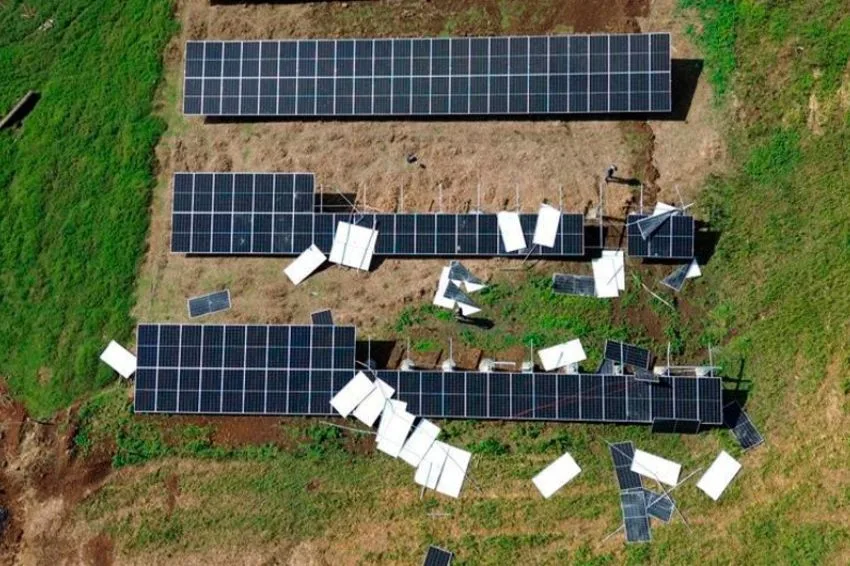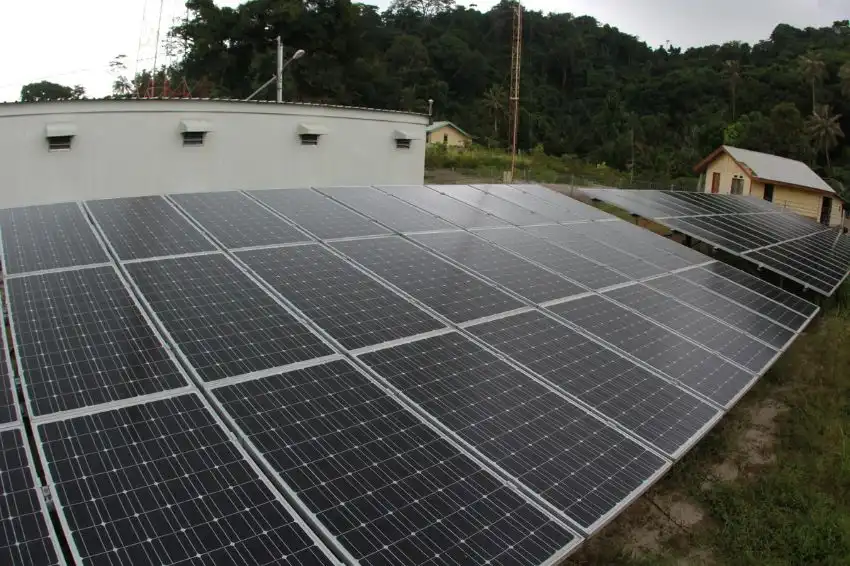Preliminary Considerations
Depending on the determination of the Law 14,300/22 that the CNPE (National Energy Policy Council) would be responsible for determining the guidelines for ANEEL (National Electric Energy Agency) quantified the costs and benefits of DG (distributed generation), the MME (Ministry of Mines and Energy) decided to establish a Public Consultation to collect subsidies from agents and society.
On its website, the MME made available the NT 14/2022/SE and a series of previous contributions from EPE (Energy Research Company), ONS (National Electric System Operator) and associations. In this NT, the MME already makes a proposal for guidelines originating from the NT 11/2022/SE where there apparently is a guideline for observing GD costs.
Following as a guide this set of guidelines initially proposed by the MME in NT 14 and an analysis framework proposed by the Rock Mountain Institute (RMI) for solar DG (Figure 1), the INEL (National Institute of Clean Energy) created a GD Valuation Working Group and presents its initial considerations to collaborate with this consultation.

From the designed structure, we can identify three large blocks of attributes: electrical attributes, financial attributes and socio-environmental attributes. It is interesting to note that Law 14,300/22 removed socio-environmental attributes and, to a certain extent, financial attributes from the analysis.
However, in the case of CNPE, which brings together the Ministries of the Environment, Ministry of Economy, Ministry of Infrastructure, Ministry of Regional Development, Ministry of Science, Technology and Innovation, Civil House, among others, we understand that the Law, when calling a body that defines public policies associated with the energy sector should deal mainly with socio-environmental attributes and not just electrical attributes that could be located in a more technical sphere, that is, within regulatory agencies.
In the context of public policies, it would be interesting to carry out a cost and benefit analysis (ACB) as set out in the Practical Guide to ACB for Infrastructure Investment Projects (SDI/ME) where the externalities associated with these attributes would be computed.
Although GD is not characterized as a specific infrastructure project, it is still a policy as it competes with projects in the area of generation, transmission and distribution that are directly affected by the Government.
Resolution 482, 2012, when established by ANEEL, did not cease to be a policy since “net-metering” is an incentive for GD as warned by the TCU (Federal Audit Court) itself.
§3 of Art 17 of Law 14,300/22 says that the CNPE must consider in formulating the guidelines the benefits of MMGD (distributed micro and mini generation) comprising the components of generation, electrical losses, transmission and distribution, that is, it specifies what would be these benefits without mentioning the socio-environmental benefits.
ACB of electrical attributes
Energy
Avoided energy (aec items)
Of the guidelines proposed in NT 14, we can list item a) regarding the expansion of generation in its energy aspect and item c) specific to technical losses in transmission and distribution networks.
DG competes with existing centralized generation as well as centralized expansion. It can, on many occasions, displace more expensive generation during the operation of the SIN (National Interconnected System), that is, it participates as a cheap generator in the composition of the marginal operating cost (CMO). In countries in the northern hemisphere, DG displaces thermal generation using coal, fuel oil, diesel and natural gas, which can be priced directly.
In the Brazilian case, the benefit of this displacement can be quantified using available computer programs such as NEWAVE, DECOMP and DESSEM. It is important to mention that simply not charging compensation for energy (TE component) does not incorporate these benefits to the DG owner, as they are allocated to all consumers.
As an example, the recent water crisis could be alleviated if the level of DG penetration was higher, not requiring expensive energy purchases that increase the consumer's final tariff.
=> Consider the gains from displacing more expensive thermal energy in benefit calculations.
Losses (items c, def)
With regard to technical losses, local DG is the one that most reduces losses in distribution and transmission as in general it is reducing direct consumption. Remote DG reduces transmission losses, but in the case of distribution it will depend on the existence of load in the vicinity of the project.
It is in this sense that a case-by-case analysis is necessary, establishing benefits depending on location as pointed out in items d) and f) of NT 14.
ANEEL took upon itself the calculation of technical losses in the MT and BT networks on the occasion of the distributors' tariff reviews. It made the use of OpenDSS (EPRE) official and all distributors are obliged to make electrical data available in the BDGD (Distributor Geographic Database) to simulate these losses.
As this is an exhaustive calculation, ANEEL must simplify the simulations of these gains considering typical feeders and typical load curves arising from measurement campaigns.
From these simulations it is possible to establish the most general relationship possible of losses depending on the typical feeder, loads (commercial, residential and industrial) and the degree of DG penetration. It is important to emphasize that ANEEL already simulates all feeders of all concessionaires in this way, simply including DG and identifying decreases and increases in losses.
As the effect on the distributors' HV networks and the Basic Network is more dispersed, it is possible to identify regional gains in a more general way considering penetration levels through power flow programs such as ANAREDE.
=> Calculate the increases and decreases in losses in feeders through procedures already routinely carried out by ANEEL during periodic tariff reviews of distributors;
=> Based on the aggregate effect of DG on the typical load curves of AT/MT transformers, calculate for each region (or concession) the gains in losses in the AT and RB networks.
Capacity (item a)
The costs and benefits of DG related to the capacity (power) arising from the system depend on the DG characteristic. If DG is dispatchable like biomass, it can significantly contribute to reducing capacity as it can modulate its generation depending on the region's load curve.
As a large part of DG comes from photovoltaic systems, it is important to analyze its effect in relation to the region's load curve. The ONS contribution (document available in CP 129/22) mentions the benefit of DG in transmission capacity.
Unlike countries in the northern hemisphere where sun intensity and temperature are lower, tropical countries have experienced high temperatures during the day, increasing energy consumption in summer.
The refrigeration and air conditioning load in Brazil (a tropical country) has been rising continuously due to greater access to air conditioning units as well as the effect of climate change, which causes greater warming. As a consequence, the hourly and seasonal peak of the system has shifted to the daytime and summer.
Although solar generation is restricted to the daytime period, it ends up helping to minimize the peak of the system since it is in summer and during this period of the day that solar generation is intensified, alleviating the system's need for additional capacity.
There is, therefore, a positive correlation between the increase in load and the increase in generation (solar DG), reducing the load on the transmission and distribution networks that supply a given region. There is an unfavorable point for DG when there is an incidence of clouds that limit solar generation.
However, it is important to remember that in this case the temperature decreases and the loads that cause the peak also end up decreasing. It is therefore necessary to statistically calculate the regional effect of solar DG on the system's peak power using metrics such as ELCC (Effective Load-Carrying Capacity).
Generation
The need for generation capacity is important to provide better control over the load-generation balance and act on the system frequency. With the increase in intermittent renewable sources, controlling the system's power has been a concern for the ONS.
Although DG is not directly connected to the system under ONS supervision, the regional and total system load has already had variations in relation to the traditional forecast that can be justified by this generation.
With the increase in DG penetration, this variation should increase, causing ramps for loading and unloading loads that affect generation dispatches from centralized plants and system frequency control. This subject will be further detailed in the network support item.
Given that a capacity is necessary to increase system safety in the face of disturbances in the generation system and load, it is important to evaluate the benefit of DG through ELCC, that is, to observe the net variation in load.
The programs used by the ONS to define necessary capacity or power reserve do not incorporate the effect of correlations between wind and solar generations and the load.
=> Evaluate the gains in additional capacity in the system due to DG using metrics such as ELCC.
Streaming
As transmission is necessary to transfer generation towards the load, there is a need for transmission capacity to meet the power demanded at the same time as generation capacity.
In this way, the requirements necessary for generation become present for transmission. The basic difference is that capacity needs must be assessed on a regional basis, that is, with a different grain of generation.
In this case, the load curves and influence of DG on peak reduction in the border bars between the distributor and RB must be evaluated and identify the gains in peak reduction. This decrease reflects the postponement of investment in transmission networks, which represents a long-term gain for consumers.
The identification of a regional ELCC in this case is important to identify the benefits, mainly because in the Brazilian case, as already mentioned, there is a positive correlation between load and solar generation.
=> Evaluate power gains for postponing investments in transmission using metrics similar to ELCC on a regional basis.
Distribution
Given that in distribution the local characteristic is more striking and very dependent on the feeder's load profile, the calculation of costs and benefits must be done with less granularity. In general, the gains are effective in feeders with a predominance of commercial load since the peak occurs during the day.
Even so, it is necessary to check when the peak would move again to the night period due to the increase in the level of DG penetration since, in this case, there would be no additional benefit. A similar procedure to that suggested for calculating losses must be done by checking the feeder curve with and without the DGs present.
The difference between power peaks must be used to price work postponements.
=> Using the same data structure used for feeder losses, evaluate the tip displacement and its effect when DG is present.
Network support services (item b)
With the segregation of generation, transmission and distribution activities that occurred in the 1990s with the aim of introducing competition in the sector, essential activities that were previously integrated in vertical companies began to be separated.
Network support services or ancillary services necessary for system integrity are now priced despite often being difficult to segregate directly.
The ONS warns that because GD does not have dispatch control, there is a need to intensify the system with ancillary services, especially if the degree of penetration is high, which incurs additional costs to the system. Below are listed the main services.
Voltage control and reagent support
In the case of solar DG, variations in generation throughout the day due to the incidence of clouds, the increase and decrease in generation at the beginning and end of the day, can cause variations in voltages. Often, depending on the amount of generation, distributors do not allow connection.
However, in many cases, inverters can provide damping of these oscillations caused by the DG's own power variation or even provide the voltage control service through the injected reactive power. In this case, there is a benefit from DG to the MT and AT networks that must be priced.
=> Evaluate with DG provider agents the possibility of acting on voltage control, minimizing their own impact on the network and even additionally providing this ancillary service.
Frequency control and power reserve
As already mentioned, the introduction of non-dispatchable elements tends to complicate the generation-load balance, resulting in the need to provide an ancillary frequency control service.
When the degree of DG penetration is small, large hydraulic or thermoelectric plants end up dampening frequency variations. Today, for example, this damping is widely used for wind farms in the northeast region.
A problem highlighted by the ONS refers to the need for DG predictability so that it is possible to prepare the system to buffer generation variations. Also in this case, inverters can be used to control the active power and smooth the ramps.
The predictability of sunlight and temperature combined with knowledge of their effects on generation and load can significantly help to minimize frequency deviations.
=> Evaluate the benefits of load-DG correlation in reducing power reserve;
=> Evaluate with agents the provision of control through the inverter to reduce ramps.
Risk and Security
Due to the degree of unpredictability of renewable generation in general, there is an increased risk of not meeting the load. The ONS comments that with the increase in DG penetration, there is the possibility of “black outs” occurring when it is not possible to dampen ramps or even due to cascade shutdowns of inverters.
It is necessary to introduce additional elements into the network to minimize these effects, including the use of storage.
The problems raised already occur with wind energy, which is more intensive in the use of electrical grids due to being centralized and having high intermittency. DG can cause problems restricted to a region or even to the feeder without disturbing the basic network at this level.
It can even be said that the solution with local elements such as storage (batteries, for example) tends to bring greater security and resilience to the electrical system.
Other aspects
Differentiation of local and remote DG (item f)
The use of generation in another location or at another time through the “net-metering” system includes the use of the network and virtual storage, which must be priced. We can divide generation into two parts: that which is used simultaneously on site and that which is used off site. Only the second requires network services.
In this case, it is important to explore the absorption conditions of this generation in the neighborhood, that is, the use of the network is greater the less load there is in the vicinity of the DG. Analysis can be done with OpenDSS by observing flow reversals along the feeder.
The inversion can go beyond the boundaries of the MT network. The pricing of network services must take into account the location of the DG, the network configuration and the loads surrounding the DG.
=> Evaluate the use of the network by observing the flow reversal in the MT network segments throughout the day, taking as a cost only the feeder segments where DG actually uses it;
=> In other segments and upstream networks, you should evaluate the benefits of postponing investments as already mentioned.
Contractual disclosure of distributors (item g)
The exposure of distributors is a consequence of the current model of regulated contracting imposed by the government since Law 10848/04. Distributors are obliged to contract 100% of their five-year load forecast and with DG the downward forecast error tends to increase.
However, the consumer is free to decide how much to consume and how much to generate their own energy. It is clear that there is a need to review the current ACR model as already in progress through PL 414.
It is therefore necessary that energy purchase auctions are seriously reviewed and that distributors can improve their load increase forecasting processes.
On the other hand, agents must be aware that freedom in contracting imposes risks that must be assessed, but not impose a liability on GD that is not owed to it.
=> Improve the forecast of net load on distribution networks, including improving measurement systems;
=> Enable the participation of distributors in the ACL to dispose of excess energy due to the increase in DG.
Effects of Sectoral Charges on other Consumers (hek items)
The charge for effective use of the network is fair and must consider the locational and temporal aspects mentioned above. However, charging the consumer with a liability in the new tariff that is above what is reasonable does not seem fair.
If the government has been creating costs over time due to a series of often mistaken decisions and if there has not been adequate preparation for the ongoing technological revolution, we understand that the consumer should not bear these liabilities.
Agents are not given mechanisms to contest the purchase of additional energy, transmission expansion, etc. The need for transparency as pointed out in item k is essential and whenever possible, the rationality of tariffs must be disclosed so that the consumer can also have a more effective participation.
Do not allow double counting and strive for efficiency (items i and j)
We understand that these premises are basic for any economic regulation, both in terms of tariff level and structure.


















One Response
I liked the subject.
But I make a suggestion: – Here in RJ, we are encountering many problems when it comes to entering GD projects at the concessionaires. The email where we sent the documentation accepts the documents, issues a protocol, but stops there. Virtual agency accepts documentation but takes a long time to return. They say that we now have to go and make an appointment at the physical store and take the documentation in person on paper.
It seems to me to be a step backwards, in the age of computer technology, that we have to carry papers.
Seems like a good article to me
ATT
Sergio Gomes